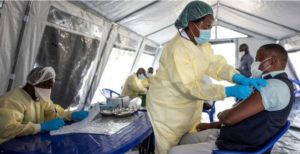EU looking at simplifying procedures for Schengen Visa
Brussels – With a total of 18.8 million jobs in 2011, tourism has become one of the biggest generators of employment in the European Union and a key driver for economic growth and development. In 2011 foreign visitor spending amounted to €330.44 billion.
According to recent estimations these figures are likely to increase up to 20.4 million jobs and €427.31 billion in 2022.
If fully exploited, the current visa rules could ensure that the EU remains an attractive destination for more tourists/third country nationals, while at the same time boosting EU’s economic activity and job creation. Indeed, tourism has a considerable impact on the economy as a whole, through spending in accommodation, food and drink, transport, entertainment, shopping, etc.
According to Tourism Economics estimates based on different scenario’s, the EU-Schengen area has the potential to gain between 8 and 46 million additional inbound international tourists by 2015 if the flexibility in the current visa rules is fully exploited, which could generate an additional income of between EUR 11-60 billion in international tourism receipts (exports) and create between 100 000 to 500 000 additional jobs directly in the tourism sector. According to these same Tourism Economics estimates, total job creation (including both indirect and induced impact) could reach between 200 000 and 1.1 million by 2015.
“Given the current economic downturn we should strive to increase tourist flows to Europe while continuing to ensure the security of our borders” said Commissioner for Home Affairs Cecilia Malmström. ”Facilitating opportunities for legitimate travellers, who do not pose a security risk, to visit Europe can only reinforce our position as the world’s number one tourist destination, a most welcome achievement for our economy”, she added.
“Tourism and travel facilitation have always been high on my agenda. I am very pleased that the excellent cooperation between Commissioner Malmström’s services and mine are bearing fruit. I consider this Communication a milestone, in that the Commission officially recognises the importance of taking economic considerations into account when adopting decisions on visa policy”, said European Commission Vice President Antonio Tajani.
Figures show that the number of visas issued has increased significantly in recent years and that visa refusals remain low. Around 460 000 Schengen visas were issued in India in 2011; the number was 340 000 in 2007. Also the number of visas issued in China significantly increased: 560 000 visas in 2008, compared to 1 026 000 in 2011. In Russia around 5 152 000 visas were issued in 2011, compared to 3 500 000 in 2007.
A lot can be achieved already under existing visa rules and many obstacles can be removed by a correct implementation of the Visa Code by Member States’ consulates. In particular, consulates should enforce the 15 days deadline for granting an appointment, the 15 days deadline for a decision on the visa application, the availability of application forms in the language of the host country and they should also assess the possibility to issue multiple entry visas.
In a long term perspective, possible changes of the current visa rules could also be explored, including: Streamlining and shortening the procedures (reconsidering all steps of the procedure including lodging of the visa application by intermediaries/travel agencies, and prior consultation); Clarifying the definition of the competent consulate for processing the visa application; Simplifying the application form; Simplifying/clarifying the requirements for supporting documents; Clarifying the rules on visa fee waivers and on the issuing of multiple entry visas; Improving consular organisation and cooperation, e.g. by redefining the legal framework for Common Application Centres, facilitating the establishment of such centres and their functioning; Enhancing Local Schengen Cooperation (harmonising visa practices in the Schengen countries), in order to make it more efficient.
Moreover, technological developments should also be taken into account. For instance, the Commission will soon put forward legislative proposals on ‘Smart Borders’ meant to ensure smoother travel flows at EU’s external borders.
The Schengen area, which has common procedures and conditions for visa application from third countries, covers 22 EU member states plus Iceland, Liechtenstein, Norway and Switzerland. Citizens from 42 countries and territories are currently exempted of visa procedure. In Asia Pacific, countries benefiting for that facility are Australia, Brunei, Hong Kong, Japan, Macao, Malaysia, New Zealand, Singapore, South Korea and since 2011 Taiwan. – EU Commission















